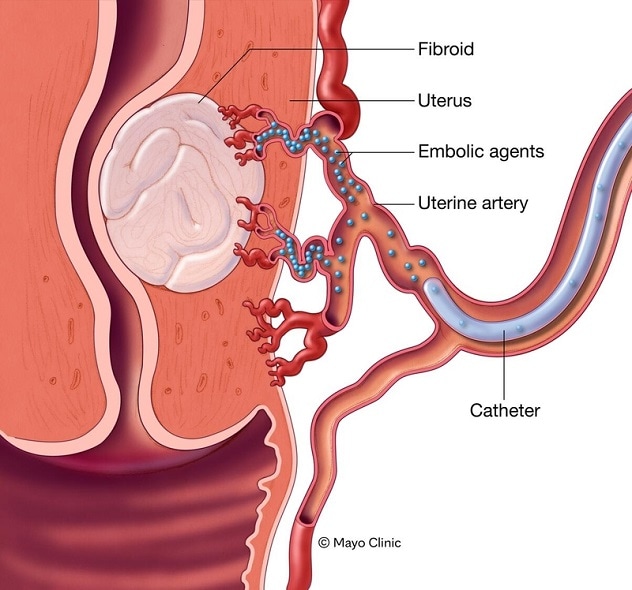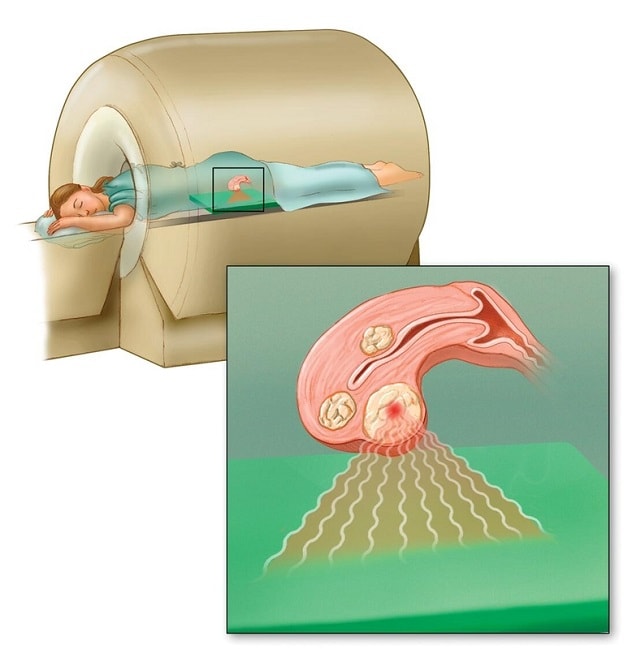Jan. 09, 2024
It may seem counterintuitive to think of a GYN surgeon encouraging physicians to consider nonsurgical options for symptomatic uterine fibroids, yet that is exactly what Ebbie A. Stewart, M.D., of Mayo Clinic in Minnesota, is doing.
She wants physicians to think carefully about their patients and the appropriateness of hysterectomy. This surgery has been a popular treatment for fibroids, removing the uterus and thus the source of the problem completely.
"Many women are still not offered alternatives to hysterectomy for fibroids despite the growing body of data indicating the effectiveness and safety of those alternatives," says Dr. Stewart.
In an August 2023 paper published in Current Opinion in Obstetrics and Gynecology, she and fellow author Si Won Lee, M.D., Ph.D., state that some women want more-conservative treatment options or have contraindications to surgery and thus need alternatives.
"What's available now is the most innovative fibroid therapy I've seen in my career."
Why hysterectomy predominates for uterine fibroids
According to Dr. Stewart, a primary reason for hysterectomy's predominance — versus recent, nonsurgical options — to address uterine fibroids is that choosing this surgery is essentially easy decision-making for the medical professional. Regardless of whether fibroids are pea-sized or basketball-sized, for one fibroid or 50, she contends that hysterectomy has been used as a universal solution. Further, as most fibroid care is in the hands of gynecologists, hysterectomy falls more into their purview than do other fibroid treatment options. Finally, removing the uterus eliminates the possibility of new fibroids forming.
However, Dr. Stewart has observed that many patients do not trust GYN surgeons with fibroid management, as patients believe that the surgeons push hysterectomy.
Notably, investigators have now accumulated data pointing to hysterectomy's downsides, including elevated cardiac disease, depression and anxiety risks, even when a patient retains the ovaries.
The case for nonsurgical treatment for uterine fibroids
For most patients, not having surgery is advantageous, according to Dr. Stewart. Recovery is easier with nonsurgical therapies, and the risks of nonsurgical treatment are lower than those for surgery. Most importantly, some patients prioritize retaining their uteri, some to pursue pregnancy and others with no plans for future pregnancy.
Dr. Stewart strongly believes that presenting the full range of options for uterine fibroid treatment is good for patients and thereby the hospital.
"This brings you into a shared decision-making model with the healthcare professional and the patient," she says. "It acknowledges that not all treatments are good for all women."
The situation with uterine fibroid treatment is akin to prostate cancer's treatment history, according to Dr. Stewart. Previously, surgery was the norm for every patient with prostate cancer. Yet now there are nonsurgical options. She views uterine fibroid treatment as moving in the same direction.
Dr. Stewart acknowledges becoming a skilled fibroid surgeon is a significant accomplishment — so significant that openness to nonsurgical treatment can be challenging for these professionals.
A time of innovation in uterine fibroid treatment
 Embolización de las arterias uterinas
Embolización de las arterias uterinas
Un catéter introducido en la arteria uterina administra agentes embólicos para interrumpir el flujo sanguíneo al fibroma uterino.
 Ultrasonidos focalizados y guiados por resonancia magnética
Ultrasonidos focalizados y guiados por resonancia magnética
La terapia de ultrasonidos focalizados y guiados por resonancia magnética calienta y destruye los fibromas usando ondas de ultrasonido de alta intensidad guiadas por resonancia magnética, lo que ayuda a precisar la ubicación de los fibromas.
Now, new medical and minimally invasive options are showing promise for treatment of multiple uterine fibroid symptoms. Many of these nonsurgical options have demonstrated equal effectiveness to surgery in rigorous, randomized clinical trials.
"What's available now is the most innovative fibroid therapy I've seen in my career," says Dr. Stewart.
Beyond surgery, therapeutic options now available for patients include:
Medical options. Many options are currently available, such as contraceptive steroid hormones, gonadotropin-releasing hormone (GnRH) agonists and antagonists with and without additional hormones, progesterone-releasing intrauterine devices, selective progesterone receptor modulators, and tranexamic acid during menses. Two oral GnRH antagonists combined with low doses of estrogen and progestin are now FDA approved specifically for symptomatic fibroids.
Downsides to uterine fibroid medications are slim yet need to be considered per Dr. Stewart. For example, with oral medications, patients must remember to take the medications according to a prescribed daily to twice-daily schedule. They also might not become pregnant while on some of these medications, as the treatments can interfere with ovulation.
"These medications are very effective," says Dr. Stewart. "They treat a range of symptoms, and the side effects are low. But these meds are worth the side effects."
Minimally invasive nonsurgical treatment options. One widely used, minimally invasive option is uterine artery embolization, proved effective for symptomatic uterine fibroids by multiple studies. Mayo Clinic also has significant experience with MRI-guided focused ultrasound, another minimally invasive option.
Referral considerations for uterine fibroids
For patients who have symptomatic uterine fibroids, a medical center such as Mayo Clinic can offer more treatment options, according to Dr. Stewart. She strongly feels that building a GYN practice requires a reputation for trying to find the right treatment for each individual patient.
"You build your practice if you offer multiple options, including referral to another medical center," says Dr. Stewart. "Being open to alternatives to hysterectomy and being willing to discuss them with the patient builds trust and rapport. It also establishes that the patient's interests are in front. As uterine fibroids are so common, an openness to nonsurgical treatment and a customized approach to each patient's situation can increase your referral base."
For more information
Si Won L, et al. New treatment options for nonsurgical management of uterine fibroids. Current Opinion in Obstetrics and Gynecology. 2023;35:288.
Refer a patient to Mayo Clinic.